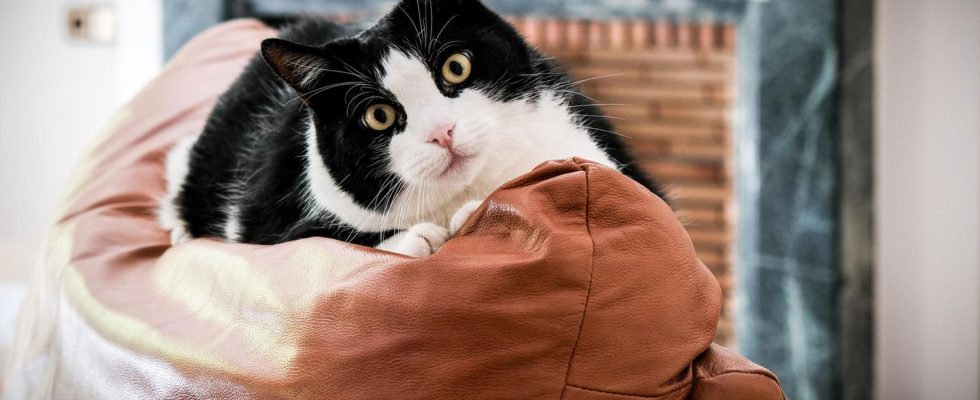Pets
A study provides evidence of typical behavior – how normal is your cat?
Tuxedo cats, black and white cats that look a bit like they’re wearing a suit, are considered particularly crazy. At least that’s what many owners say – but a connection between coat color and character cannot be scientifically confirmed
© Diana Simion/Getty Images
A cat in the house can bring a lot of joy, they are playful, curious and sometimes like to cuddle. But sometimes people pee in the corner of the bathroom instead of the litter box. But what behavior is still normal?
Almost all domestic cats are curious about new things – almost none of them constantly mark furniture or trouser legs. At least that’s what the evaluation of hundreds of questionnaires filled out by Spanish cat owners shows. Most kitties (81 percent) purr most of the time or always when they are petted, as reported in the specialist journal “Journal of Veterinary Behavior” is called. Almost as many meow when they want to go out or go to another room. And, it may come as no surprise to cat fans: only just under 70 percent of the animals respond almost always or always when they are called.
The aim of the study was to find out which factors influence a cat’s behavior. In addition to the breed, origin and age at the time of purchase, these include, among other things, the time spent alone, the presence of other pets and the previous experience of the respective owner.
Cat in the house: what it means
Owners could use the data obtained to determine how normal their own cat’s behavior is compared to animals with similar basic requirements, according to the researchers. The results could help people who want a cat to understand what it is like to have such an animal in the house.
The domestic cat (Felis silvestris catus) is one of the world’s most popular pet species. In the EU, around 90 million households (46 percent) have at least one pet, cats being the most common, according to the study.
At the same time, more than three million cats are given to animal shelters every year in the USA alone. And at least in Spain it is known that behavioral problems top the list of reasons for a levy. Studies have shown that such problems are generally quite common in domestic cats – but cat owners seek advice from experts less often than dog owners.
The team led by David Menor-Campos from the University of Córdoba (Spain) used “Fe-BARQ”, a 100-point questionnaire to assess cat behavior, as a survey instrument. It can be used by cat owners to better assess their animal’s behavior. The number of times a particular behavior occurred in the past few months, from “never” to “always,” is indicated on a 5-point scale.
Curiosity velvet paws
For the study, Fe-BARQ information from 816 cat owners was evaluated. Most of the animals considered were neutered and already adults. Only a small proportion were purebred, with European Shorthairs, Siamese and Persians mainly represented. 83 percent of the animals showed interest in new objects or changes in their environment always or most of the time. For 88 percent of cats, the owners stated that they never or rarely sprayed urine outside the litter box, for example on furniture or trouser legs.
Prospective cat owners may also find it reassuring that, according to their owners, around 90 percent of the animals never or almost never attack feet or legs in a way that has nothing to do with play. The rate of not tearing or scratching things is just as high when the cat is alone at home.
Hangovers easier to train
Females were said to be more aggressive, both towards strangers and their owners, while male cats were more sociable, easier to train – and more noisy. Neutered animals were, on average, more playful. Cats that regularly spent more than four hours alone at home were more likely to exhibit compulsive behaviors. Cats that slept on the bed and not in their own basket were, on average, more playful, but also competed more for attention and had a higher rate of separation-related behavior problems.
Living with a dog had a major influence: according to the owners, cats in dog households purr and play more frequently on average and show fewer behavioral problems. According to the researchers, the answers from a small proportion of pedigree cats showed that Siamese cats are more sociable than Persian cats and are more afraid of new things and separation than European shorthair cats.
World Cat Day
What positive effects house cats have on our health
When it comes to the connections found, however, it should be noted that the corresponding groups were sometimes very small, so the results cannot be viewed as statistically secure. The researchers also note that the limitations of the study include the fact that there may have been subjective biases when the owners answered the questionnaire. In addition, neutered animals and households with several cats were probably overrepresented.



